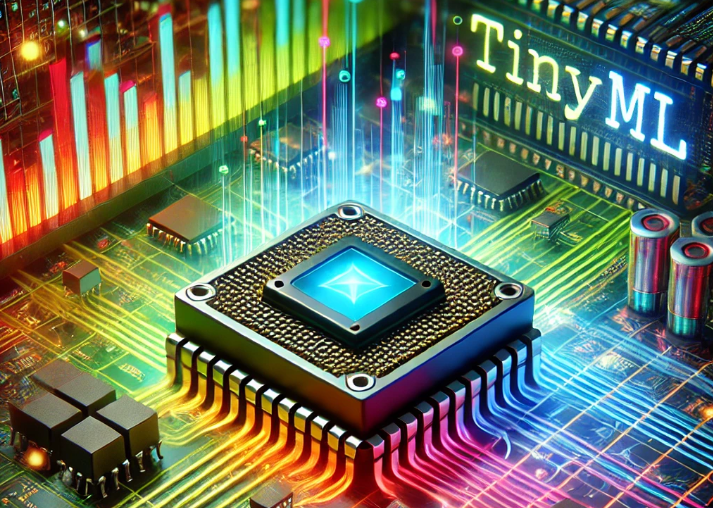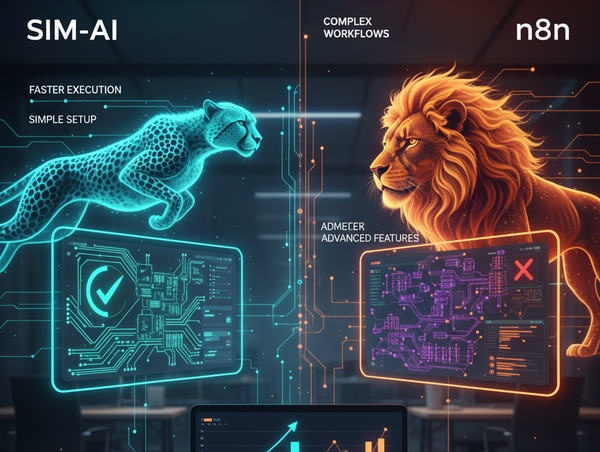TinyML: The Future of Edge AI is Small, Smart, and Everywhere!

TinyML: The Future of Edge AI is Small, Smart, and Everywhere!
For AI Enthusiasts Ready to Shape the Future
Imagine a world where your smartwatch predicts a health issue before you feel it, your thermostat learns your habits without phoning the cloud, or a tiny sensor in a field optimizes crop yields in real-time—all powered by AI that fits in the palm of your hand. Welcome to the world of TinyML, the game-changing technology bringing machine learning to the smallest devices. If you’re an AI enthusiast, buckle up: TinyML is poised to redefine edge computing, and the next five years are set to be a wild ride!
What is TinyML?
TinyML is machine learning tailored for ultra-low-power, resource-constrained devices like microcontrollers. Think devices with just a few kilobytes of memory, sipping microwatts of power, yet running complex tasks like voice recognition, image classification, or predictive maintenance. Unlike traditional AI that relies on beefy servers or cloud connections, TinyML brings intelligence directly to the edge—your wearables, IoT sensors, or smart home gadgets. It’s fast, private, and doesn’t need constant internet access.
Why should you care? Because TinyML is democratizing AI, making it accessible to billions of devices and opening a playground for innovators like you to build smarter, greener, and more efficient solutions.
Why TinyML is the Next Big Thing
The numbers tell a compelling story. The global TinyML market, valued at $1.47 billion in 2023, is projected to skyrocket to $10.80 billion by 2030, with a blistering 33% CAGR. With over 18 billion IoT devices already out there—and 30 billion expected by 2027—TinyML is the secret sauce to make them truly intelligent. Here’s why the next five years will be a golden era for TinyML:
- Hardware is Evolving Fast: Microcontrollers like Arm Cortex-M and Google’s Edge TPU are getting more powerful while staying tiny and energy-efficient. Soon, models as complex as ResNet-50 will run on devices with less than a megabyte of RAM. That’s like fitting a supercomputer in your pocket!
- Smarter Algorithms: Techniques like quantization, pruning, and neural architecture search (e.g., MCUNetV2) are shrinking AI models without sacrificing accuracy. On-device training is also emerging, letting devices learn from their environment—think a smart sensor adapting to your factory’s unique patterns.
- Killer Applications: From healthcare wearables detecting early signs of disease to agricultural sensors optimizing water use, TinyML is transforming industries. Imagine building an app for a hearing aid that filters noise in real-time or a drone that identifies pests in crops—all offline, all low-cost.
Cool Projects to Spark Your Imagination
Ready to dive into TinyML? Here are some ideas to get your coding fingers itching:
- Smart Doorbell: Build a TinyML-powered doorbell that recognizes faces or detects suspicious activity using a cheap microcontroller and a camera module.
- Gesture-Controlled Gadgets: Create a wearable that interprets hand gestures to control your smart home—without ever touching your phone.
- Wildlife Monitoring: Deploy TinyML sensors to detect animal sounds or track endangered species, contributing to conservation efforts.
- Personalized Fitness Tracker: Design a device that learns your workout patterns and provides real-time feedback, all while sipping battery power.
Tools like TensorFlow Lite Micro, Edge Impulse, and Arm CMSIS-NN make it easier than ever to get started. These platforms simplify model training and deployment, so you can focus on creating something epic.
The Big Picture: Why TinyML Matters
TinyML isn’t just about cool tech—it’s about impact. By processing data locally, it slashes bandwidth needs by up to 90%, boosts privacy (no cloud leaks!), and cuts energy use, aligning with a sustainable future. In healthcare, it’s enabling affordable diagnostics in remote areas. In agriculture, it’s tackling food security. In automotive, it’s powering safer, smarter cars. And with 5G enabling hybrid edge-cloud systems, TinyML’s potential is only growing.
But it’s not all rosy. Challenges like security vulnerabilities, lack of standardization, and the need for specialized skills could slow things down. That’s where you come in—AI enthusiasts who can push boundaries, innovate solutions, and shape the ecosystem.
Join the TinyML Revolution
The next five years will see TinyML move from niche to ubiquitous, embedding intelligence in everything from coffee makers to industrial machines. For AI enthusiasts, this is your chance to lead the charge. Whether you’re a coder, a maker, or a dreamer, TinyML offers a sandbox to build solutions that are small in size but massive in impact.
Get Started Today:
- Learn: Check out free courses on Edge Impulse or Google’s TinyML specialization on Coursera.
- Build: Grab a microcontroller (like an Arduino Nano or Raspberry Pi Pico) and experiment with TensorFlow Lite Micro.
- Connect: Join communities on X or GitHub to share ideas and collaborate with other TinyML enthusiasts.
- Innovate: Dream up a project that solves a real-world problem—your idea could be the next big thing!
The future of AI is tiny, and it’s calling your name. Let’s make the world smarter, one microcontroller at a time!
What’s your next TinyML project? Share your ideas or ask for tips in the comments below!




